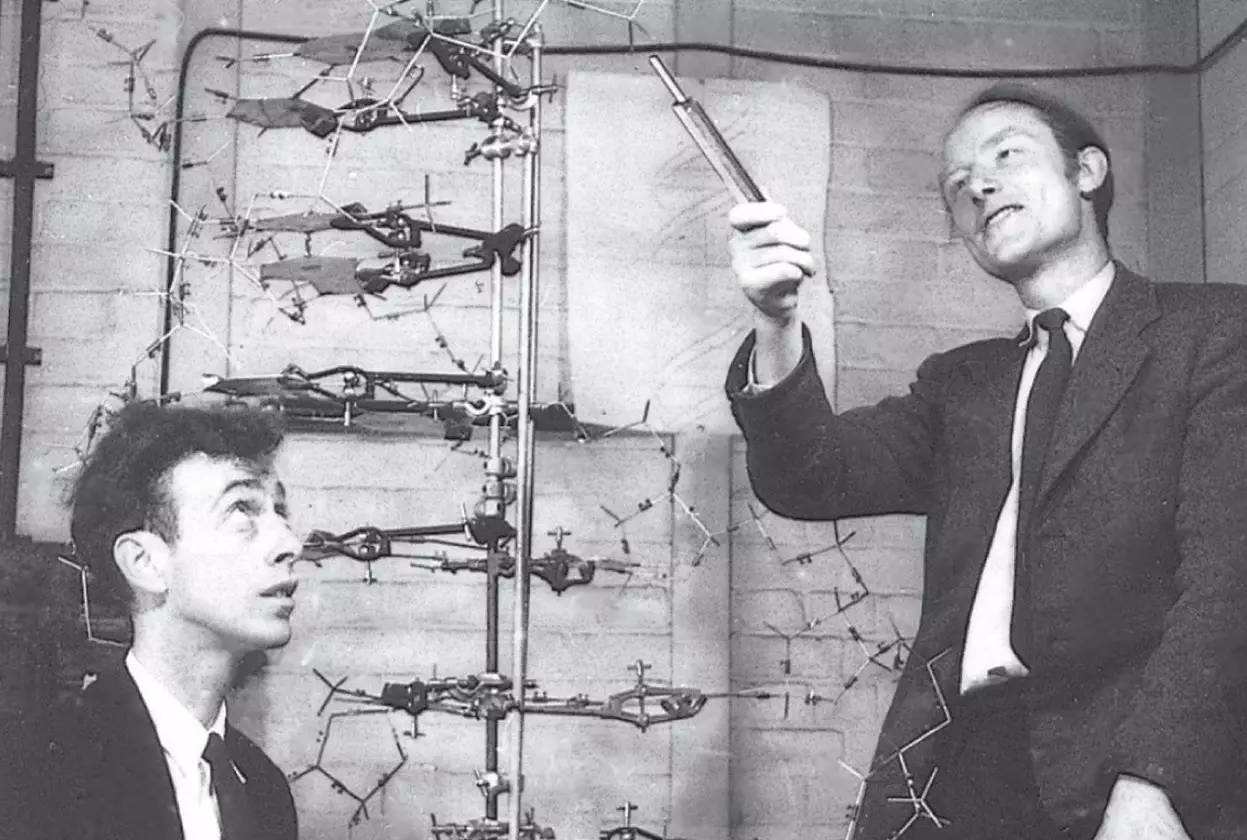Still facing the possibility of being trumped at any moment, Watson and Crick applied themselves feverishly to the problem. It was known that DNA had four chemical components — called adenine, guanine, cytosine, and thiamine — and that these paired up in particular ways. By playing with pieces of cardboard cut into the shapes of molecules, Watson and Crick were able to work out how the pieces fit together. From this they made a Meccanolike model — perhaps the most famous in modern science — consisting of metal plates bolted together in a spiral, and invited Wilkins, Franklin, and the rest of the world to have a look. Any informed person could see at once that they had solved the problem. It was without question a brilliant piece of detective work, with or without the boost of Franklin's picture.

The April 25, 1953, edition of Nature carried a 900-word article by Watson and Crick titled "A Structure for Deoxyribose Nucleic Acid." Accompanying it were separate articles by Wilkins and Franklin. It was an eventful time in the world — Edmund Hillary was just about to clamber to the top of Everest while Elizabeth II was imminently to be crowned queen of England — so the discovery of the secret of life was mostly overlooked. It received a small mention in the News Chronicle and was ignored elsewhere.












